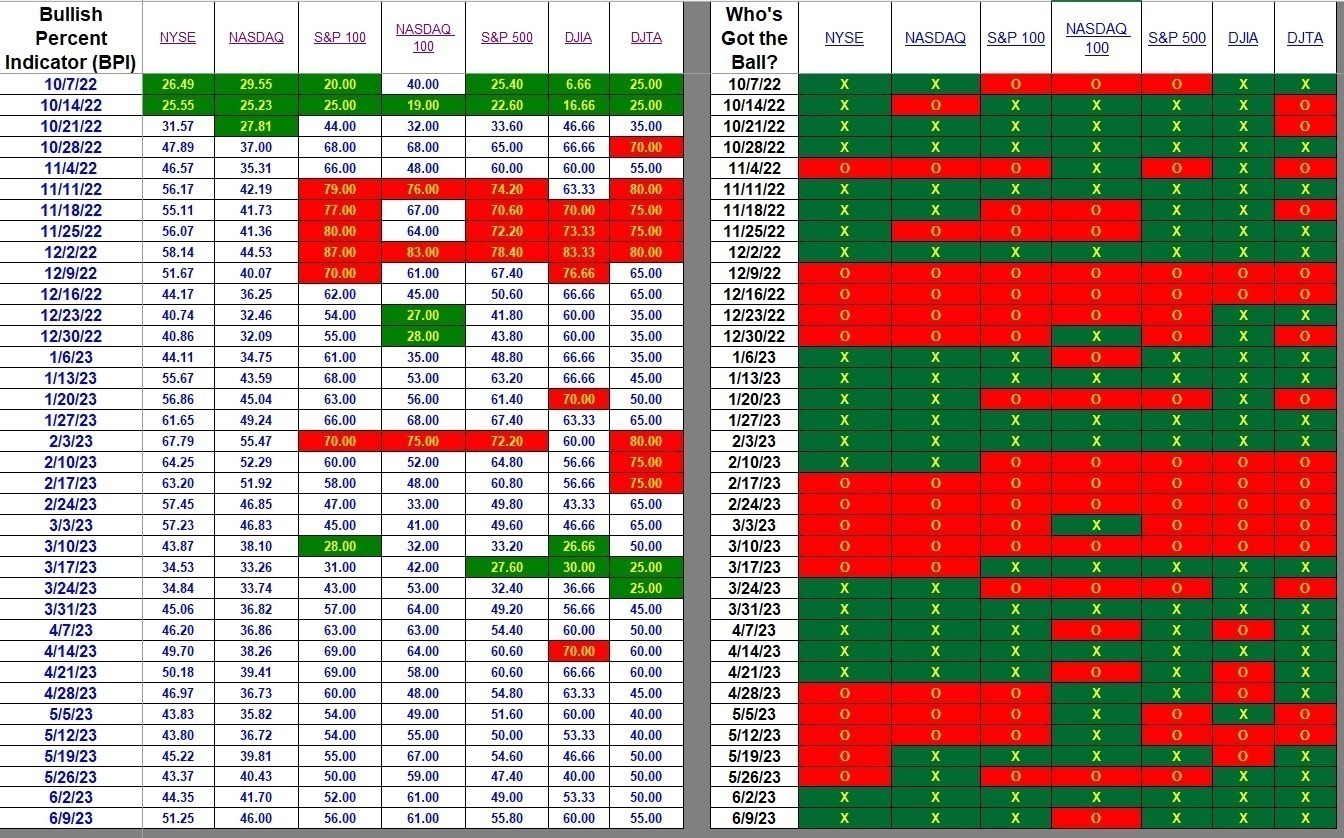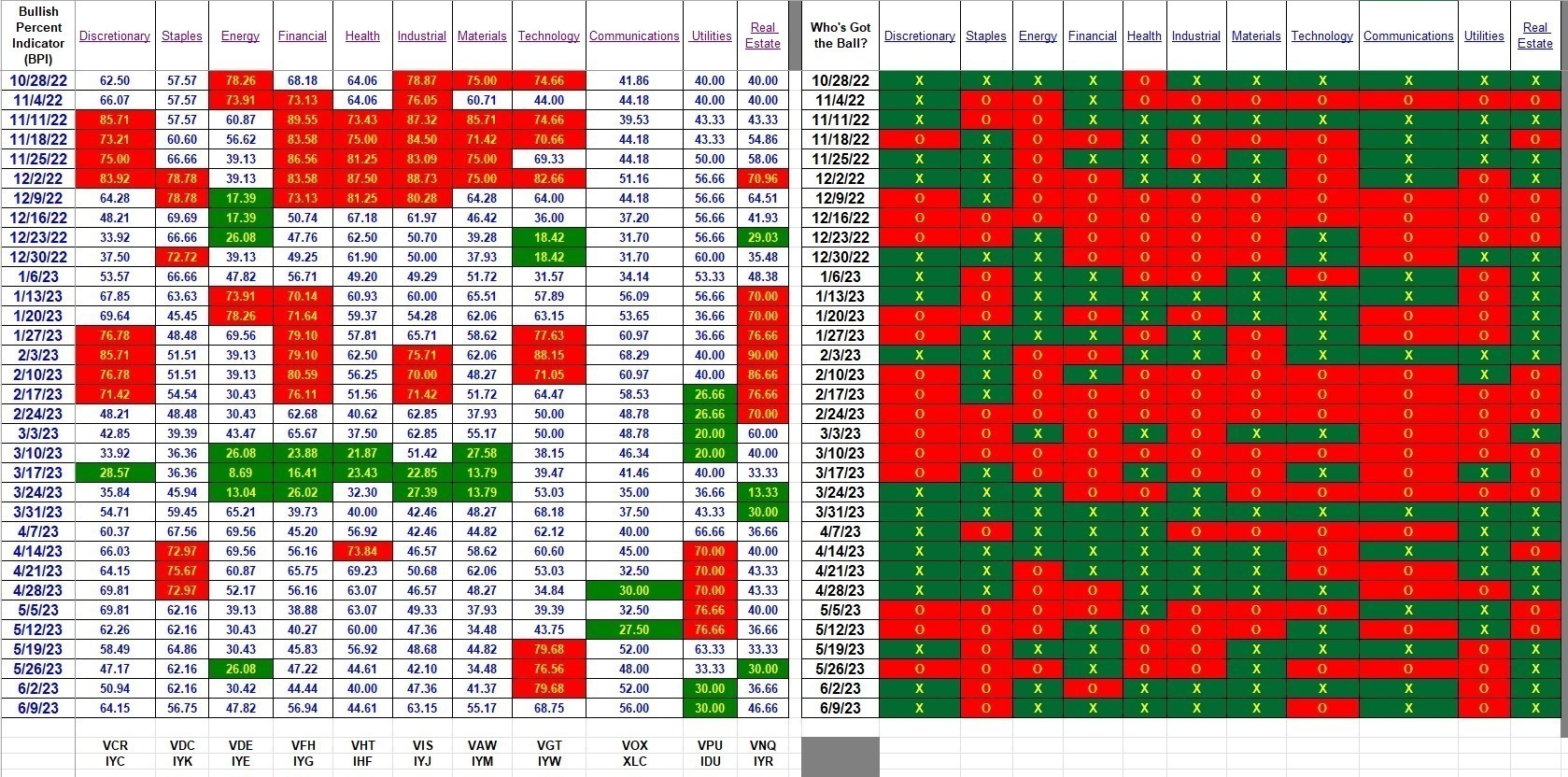
Abandon church near Lake Almanor, California
Bullish Percent Indicator (BPI) data for the past week shows positive increases in nearly all the major indexes. As for the individual sectors, Utilities is still recommended as a Buy as the BPI continues to rest on the 30% bullish mark.
Index BPI
U.S. Equities are neither oversold or overbought as the major indexes are positioned between the 40% and 60% bullish marks. What is of benefit to investors is the trend and that is up for the week. The NASDAQ 100 is one of those anomalies as the bullish percentage remained at 61% while daily action caused the Point and Figure (PnF) graph to shift from bullish (X’s) to bearish (O’s) in the right-hand column.
I use the right side of the table for a quick visual view while paying more attention to the particular percentages.

Sector BPI
And now for the sectors of the U.S. Equities market where we are now using this information to manage four Sector BPI Plus portfolios. The current recommendation is to purchase shares of either VPU or IDU. I use the Vanguard ETF as the expense ratio is generally lower. Investors can check this on Yahoo and make their own decision.

Explaining the Hypothesis of the Sector BPI Model
Here is an example of how the Sector BPI Plus model works with a specific portfolio. I am considering a new “tweak” to the BPI Sector model. Instead of setting the volatility coefficient to a value so the highest percentage one invests in a particular sector is 25%, I’m seriously considering lower that percentage to 15% or 20%. Why the change? During the most recent updates of the Sector BPI portfolios there has been insufficient cash available to purchase shares of new sectors when they are recommended. For example, in all four portfolios there is currently a lack of cash to invest in Utilities (VPU). An investor can add new cash to the portfolio to counter this problem, but that is not always possible.
A secondary reason for readjusting the volatility coefficient is to bring into play the second level of portfolio population or the Dual Momentum™ component. By lowering the percentage to invest in the individual sectors one would more likely be investing in a broad market ETF such as VTI.
This potential new “tweak” will make more sense if I implement it with one of the Sector BPI Plus portfolios in the next review.
Lowell
Discover more from ITA Wealth Management
Subscribe to get the latest posts sent to your email.
“. . .I’m seriously considering lowering that percentage to 15% or 20%. . . .” I agree and feel 15% might be the safer option. – Lee
Lee,
Here is my thinking. By lowering the percentage for a given sector there is a higher probability of having cash available when a “new” sector is recommended for purchase. In addition, if cash is left over, then one can invest in a broad index such as VTI and we know that it is very difficult to outperform the broad market.
Lowell